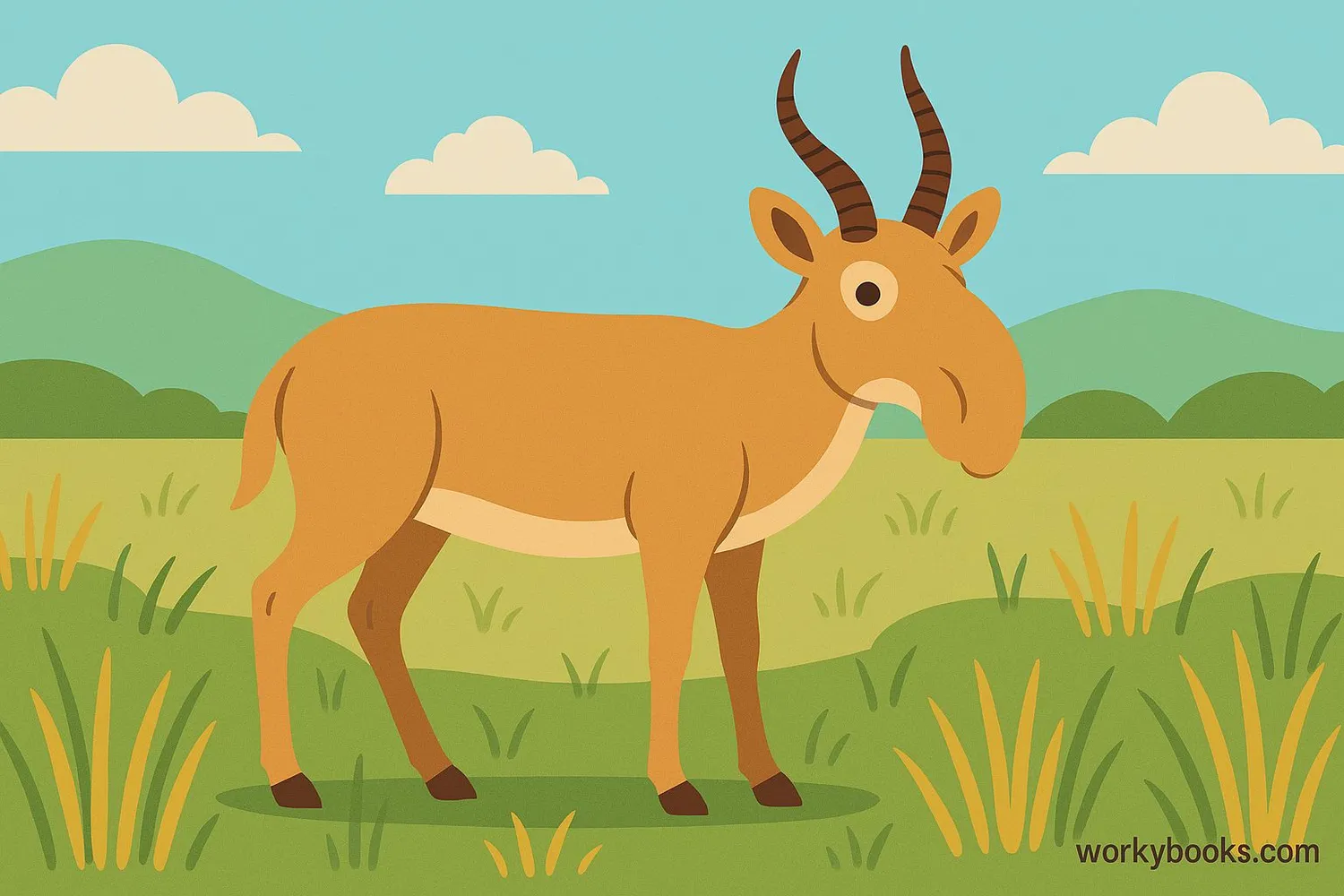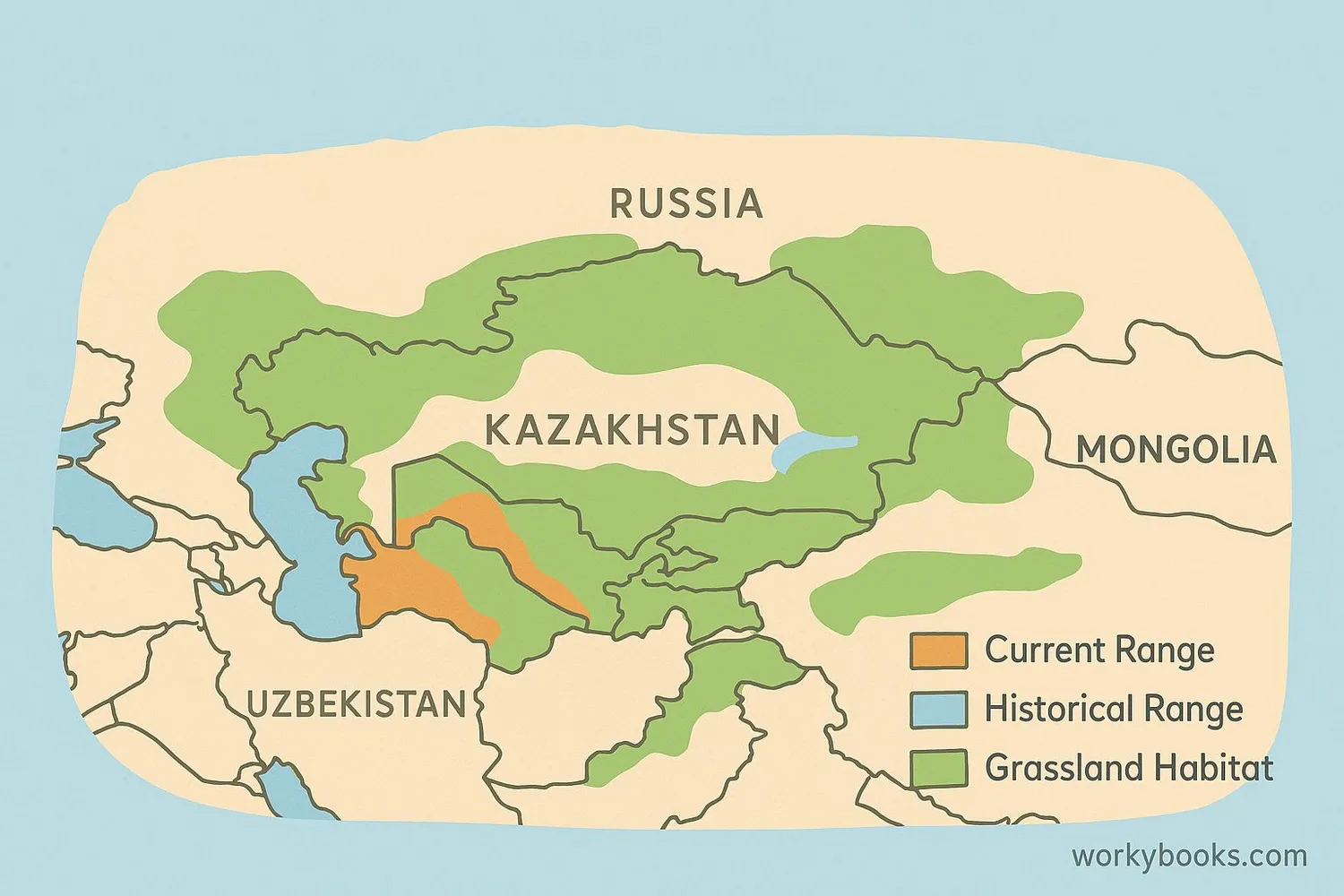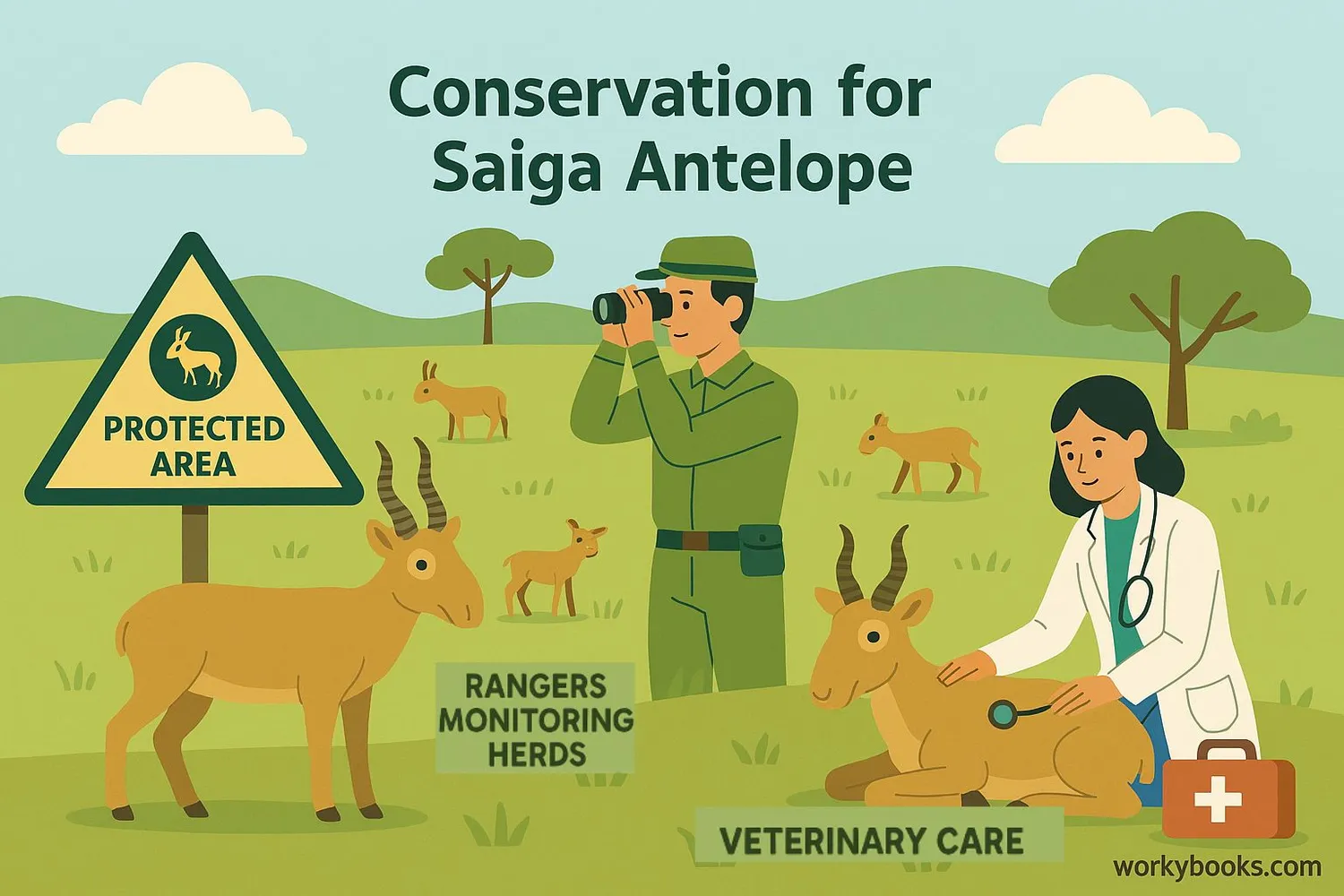Saiga Antelope - Definition, Examples, Quiz, FAQ, Trivia
Discover the fascinating story of this unique and endangered species
What is a Saiga Antelope?

The Saiga Antelope is a unique and critically endangered species known for its distinctive large, flexible nose that looks like a short trunk. These medium-sized antelopes have a compact body, long thin legs, and are known for their impressive migratory behavior across the Central Asian steppes.
Saigas are easily recognized by their unusual nose structure, which helps filter out dust in summer and warm cold air in winter. They stand about 60-80 cm (24-31 inches) at the shoulder and weigh between 20-50 kg (44-110 lbs). Their coat changes color with the seasons—pale in winter and more yellowish-red in summer.
Did You Know?
Saiga antelopes can run up to 80 km/h (50 mph) when escaping predators across the open steppe!
Habitat and Behavior

Saiga antelopes inhabit the vast dry steppe grasslands and semi-desert regions of Central Asia. Their historical range extended across much of Eurasia, but today they are found primarily in Kazakhstan, with smaller populations in Russia and Mongolia.
These animals are highly nomadic and migrate long distances between summer and winter feeding grounds. They can travel up to 72 miles in a single day during migrations! Saigas live in large herds that can include thousands of individuals, which helps protect them from predators like wolves and steppe eagles.
Diet
Herbivores that eat grasses, herbs, lichens, and shrubs
Migration
Travel long distances between seasonal habitats
Social Structure
Live in large herds for protection
Adaptations
Special nose filters air and regulates temperature
Adaptation Advantage!
The Saiga's unusual nose helps warm cold winter air before it reaches their lungs and filters out dust during dry summer months.
Conservation Status

Saiga antelopes are classified as Critically Endangered on the IUCN Red List of Threatened Species. Their population has declined dramatically by over 80% in recent decades due to multiple threats.
Major threats include:
• Poaching for their horns (valued in traditional medicine)
• Habitat loss from agriculture and development
• Climate change affecting their food sources
• Disease outbreaks that can wipe out entire herds
• Infrastructure like fences and roads blocking migration routes
Conservation organizations and governments are working together to protect these unique animals through anti-poaching patrols, habitat protection, research, and community education programs.
Anti-Poaching
Increased patrols and law enforcement to prevent illegal hunting
Habitat Protection
Establishing protected areas and wildlife corridors
Research
Scientific studies to better understand and protect the species
Saiga Antelope Quiz
Test your knowledge about Saiga Antelopes with this quiz! Answer all 5 questions to see how much you've learned.
Frequently Asked Questions
Here are answers to some common questions about Saiga Antelopes:
Interesting Facts About Saiga Antelopes
Discover some amazing facts about these unique animals!
Ancient Species
Saiga Antelopes are ancient creatures that once roamed alongside mammoths and saber-toothed cats during the last Ice Age. They've survived for thousands of years but now face their greatest threat from humans.
Twin Births
Female Saigas usually give birth to twins, which is unusual among antelope species. This high reproductive rate helps their population recover from declines, but many threats still challenge their survival.
Cultural Significance
Saiga Antelopes appear in ancient cave paintings and were historically important to nomadic cultures across the Eurasian steppe. Their migration patterns even influenced human settlement patterns.
Conservation Success
In 2015, a mysterious disease killed over 200,000 Saigas—about 60% of the global population. But thanks to conservation efforts, their numbers have been slowly increasing, showing that protection measures can work.


